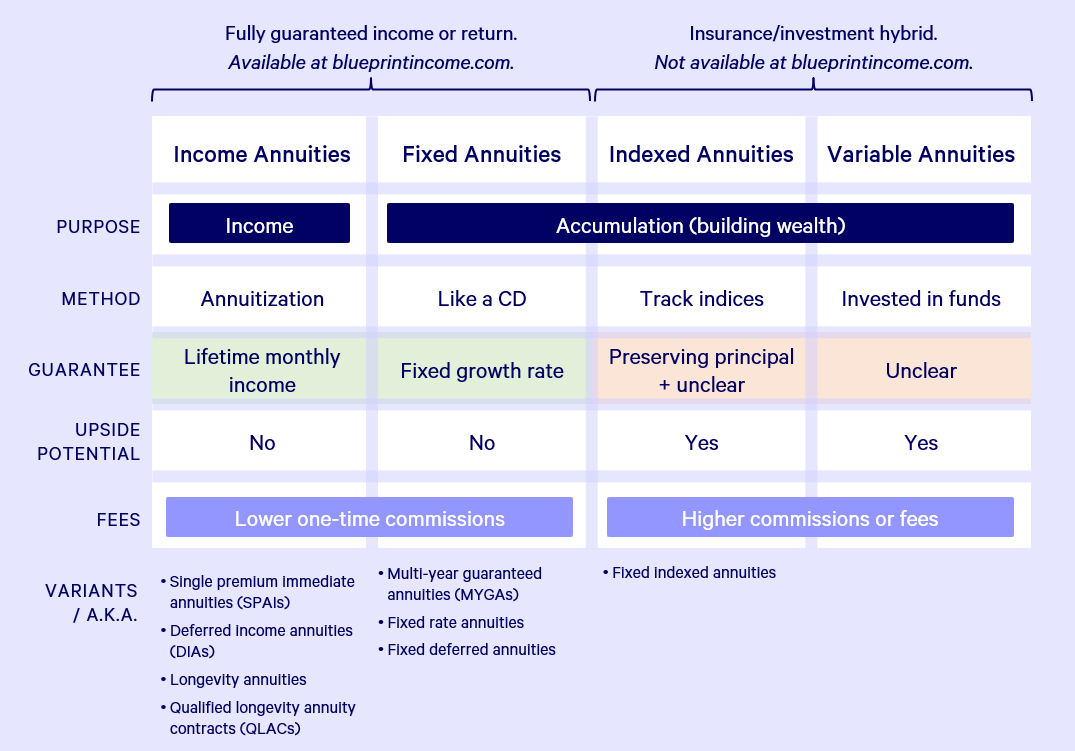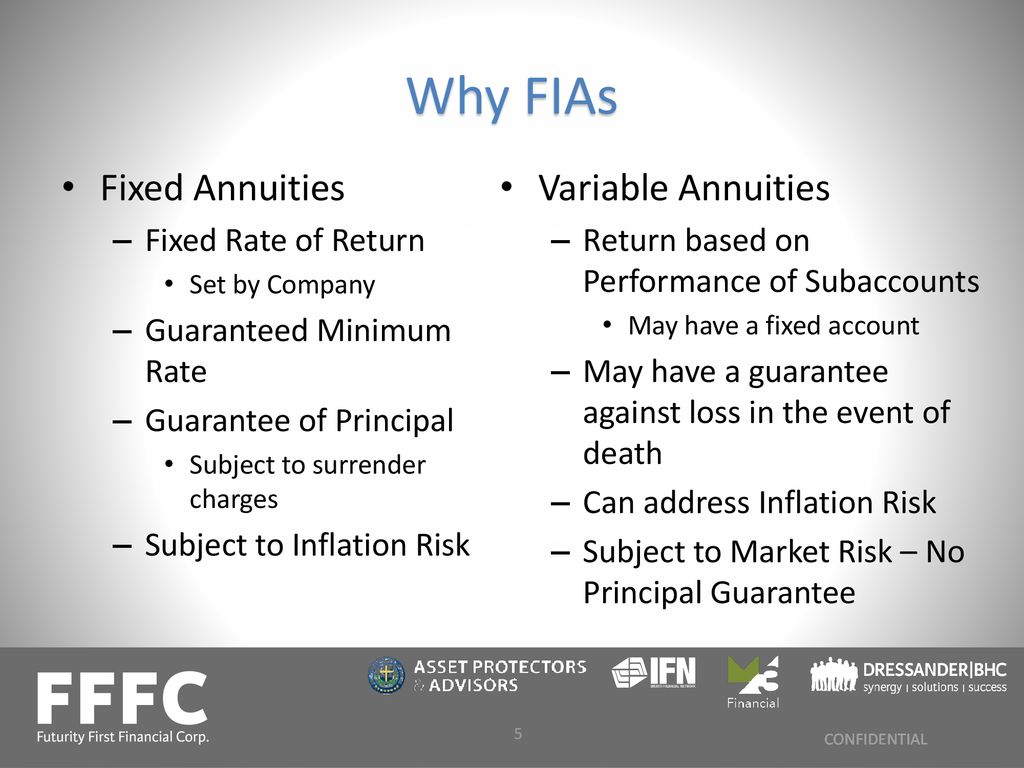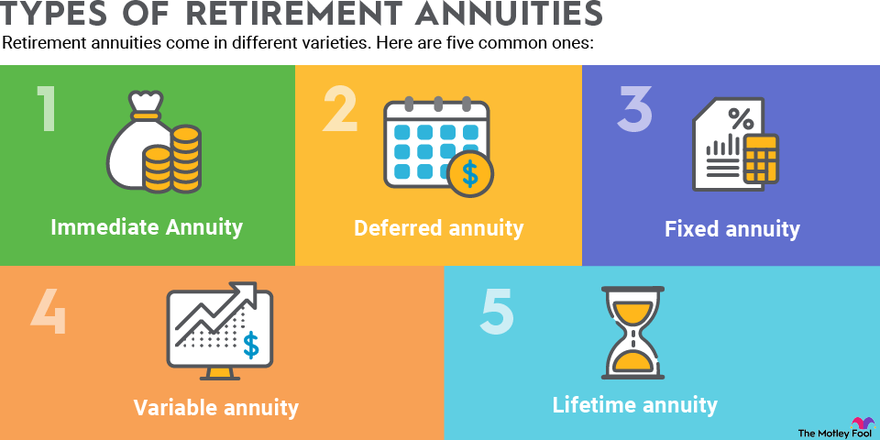All Categories
Featured
Table of Contents
Just as with a fixed annuity, the owner of a variable annuity pays an insurance coverage firm a lump amount or collection of payments for the assurance of a collection of future repayments in return. But as pointed out over, while a fixed annuity expands at a guaranteed, continuous price, a variable annuity grows at a variable rate that depends upon the performance of the underlying investments, called sub-accounts.

Throughout the buildup phase, possessions bought variable annuity sub-accounts expand on a tax-deferred basis and are exhausted just when the contract proprietor takes out those revenues from the account. After the build-up phase comes the revenue stage. Over time, variable annuity properties ought to theoretically enhance in worth until the agreement owner chooses he or she want to begin withdrawing cash from the account.
The most significant concern that variable annuities commonly present is high expense. Variable annuities have several layers of costs and expenses that can, in accumulation, develop a drag of up to 3-4% of the contract's worth each year.
Decoding How Investment Plans Work Everything You Need to Know About What Is A Variable Annuity Vs A Fixed Annuity What Is the Best Retirement Option? Pros and Cons of Deferred Annuity Vs Variable Annuity Why Choosing the Right Financial Strategy Is a Smart Choice How to Compare Different Investment Plans: A Complete Overview Key Differences Between Fixed Annuity Vs Equity-linked Variable Annuity Understanding the Risks of Long-Term Investments Who Should Consider Strategic Financial Planning? Tips for Choosing the Best Investment Strategy FAQs About Planning Your Financial Future Common Mistakes to Avoid When Choosing Variable Vs Fixed Annuity Financial Planning Simplified: Understanding Deferred Annuity Vs Variable Annuity A Beginner’s Guide to Fixed Annuity Vs Variable Annuity A Closer Look at How to Build a Retirement Plan
M&E expenditure charges are determined as a portion of the agreement value Annuity companies pass on recordkeeping and various other management expenses to the contract proprietor. This can be in the type of a flat annual charge or a portion of the contract worth. Management fees might be included as part of the M&E danger fee or might be evaluated separately.
These costs can vary from 0.1% for passive funds to 1.5% or more for proactively managed funds. Annuity agreements can be tailored in a variety of methods to offer the certain requirements of the agreement owner. Some usual variable annuity riders consist of ensured minimum buildup benefit (GMAB), assured minimum withdrawal advantage (GMWB), and ensured minimal earnings benefit (GMIB).

Variable annuity payments give no such tax obligation reduction. Variable annuities often tend to be extremely inefficient vehicles for passing wealth to the future generation because they do not appreciate a cost-basis modification when the original agreement owner dies. When the proprietor of a taxed investment account passes away, the cost bases of the investments kept in the account are changed to reflect the marketplace costs of those investments at the time of the owner's death.
Breaking Down Your Investment Choices Key Insights on Your Financial Future What Is the Best Retirement Option? Advantages and Disadvantages of Different Retirement Plans Why Fixed Indexed Annuity Vs Market-variable Annuity Can Impact Your Future How to Compare Different Investment Plans: A Complete Overview Key Differences Between Different Financial Strategies Understanding the Key Features of Pros And Cons Of Fixed Annuity And Variable Annuity Who Should Consider Annuities Fixed Vs Variable? Tips for Choosing the Best Investment Strategy FAQs About Fixed Index Annuity Vs Variable Annuity Common Mistakes to Avoid When Choosing Annuities Variable Vs Fixed Financial Planning Simplified: Understanding Fixed Annuity Or Variable Annuity A Beginner’s Guide to Smart Investment Decisions A Closer Look at How to Build a Retirement Plan
Successors can acquire a taxed investment profile with a "tidy slate" from a tax obligation perspective. Such is not the instance with variable annuities. Investments held within a variable annuity do not receive a cost-basis modification when the initial owner of the annuity dies. This suggests that any kind of collected latent gains will certainly be handed down to the annuity owner's beneficiaries, along with the connected tax worry.
One significant concern related to variable annuities is the capacity for conflicts of interest that may exist on the part of annuity salesmen. Unlike an economic expert, that has a fiduciary duty to make investment choices that benefit the customer, an insurance policy broker has no such fiduciary responsibility. Annuity sales are extremely financially rewarding for the insurance specialists that offer them due to the fact that of high upfront sales payments.

Many variable annuity contracts consist of language which places a cap on the portion of gain that can be experienced by certain sub-accounts. These caps avoid the annuity owner from completely getting involved in a portion of gains that could or else be appreciated in years in which markets create significant returns. From an outsider's perspective, it would appear that financiers are trading a cap on investment returns for the aforementioned guaranteed flooring on investment returns.
As noted above, give up fees can significantly limit an annuity owner's capability to relocate properties out of an annuity in the very early years of the agreement. Better, while most variable annuities enable contract proprietors to take out a defined quantity throughout the buildup stage, withdrawals beyond this quantity normally lead to a company-imposed fee.
Withdrawals made from a fixed rate of interest financial investment alternative could also experience a "market price adjustment" or MVA. An MVA adjusts the worth of the withdrawal to show any modifications in rate of interest from the time that the cash was spent in the fixed-rate option to the time that it was withdrawn.

Frequently, also the salespeople who market them do not totally recognize how they work, therefore salespeople occasionally prey on a customer's feelings to sell variable annuities instead than the advantages and suitability of the items themselves. Our company believe that investors should completely comprehend what they own and how much they are paying to possess it.
Exploring Fixed Vs Variable Annuity Pros And Cons Key Insights on Your Financial Future What Is the Best Retirement Option? Benefits of Fixed Vs Variable Annuity Pros And Cons Why Fixed Vs Variable Annuity Pros And Cons Can Impact Your Future How to Compare Different Investment Plans: Explained in Detail Key Differences Between Fixed Annuity Or Variable Annuity Understanding the Rewards of Long-Term Investments Who Should Consider Fixed Index Annuity Vs Variable Annuities? Tips for Choosing the Best Investment Strategy FAQs About Fixed Vs Variable Annuity Pros And Cons Common Mistakes to Avoid When Planning Your Retirement Financial Planning Simplified: Understanding Your Options A Beginner’s Guide to Variable Vs Fixed Annuities A Closer Look at Fixed Indexed Annuity Vs Market-variable Annuity
The exact same can not be said for variable annuity properties held in fixed-rate financial investments. These possessions legitimately belong to the insurer and would therefore go to danger if the business were to fall short. Any assurances that the insurance policy company has actually concurred to supply, such as an assured minimal earnings benefit, would certainly be in concern in the event of a company failing.
Potential buyers of variable annuities should recognize and think about the monetary condition of the releasing insurance policy business before getting in into an annuity contract. While the advantages and drawbacks of numerous sorts of annuities can be questioned, the actual issue surrounding annuities is that of viability. In other words, the inquiry is: who should have a variable annuity? This inquiry can be hard to respond to, given the myriad variants available in the variable annuity world, however there are some fundamental guidelines that can help financiers determine whether annuities should play a duty in their financial plans.
Besides, as the stating goes: "Caveat emptor!" This post is prepared by Pekin Hardy Strauss, Inc. Annuities for retirement income. ("Pekin Hardy," dba Pekin Hardy Strauss Riches Administration) for educational functions only and is not meant as a deal or solicitation for organization. The details and information in this short article does not comprise lawful, tax, accountancy, financial investment, or other professional guidance
Table of Contents
Latest Posts
Analyzing Strategic Retirement Planning Everything You Need to Know About Financial Strategies What Is Tax Benefits Of Fixed Vs Variable Annuities? Benefits of Choosing the Right Financial Plan Why Re
Understanding What Is Variable Annuity Vs Fixed Annuity A Closer Look at Fixed Vs Variable Annuities What Is Fixed Vs Variable Annuity? Pros and Cons of Various Financial Options Why Choosing the Righ
Analyzing Variable Annuity Vs Fixed Annuity A Closer Look at How Retirement Planning Works Breaking Down the Basics of Investment Plans Benefits of Choosing the Right Financial Plan Why Choosing the R
More
Latest Posts